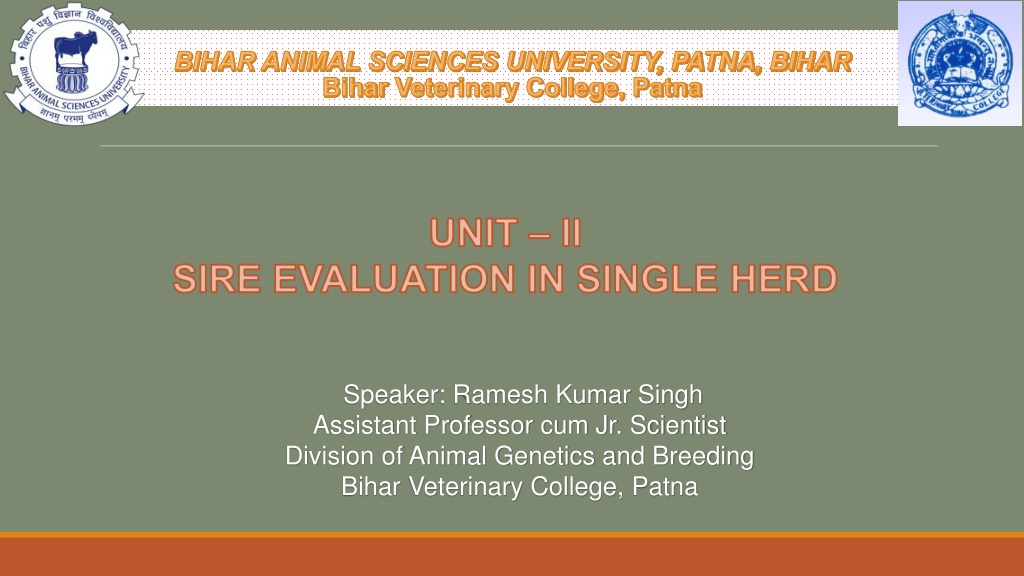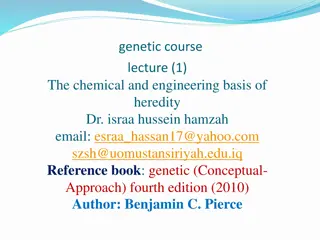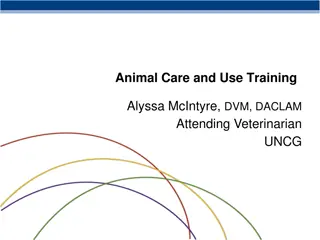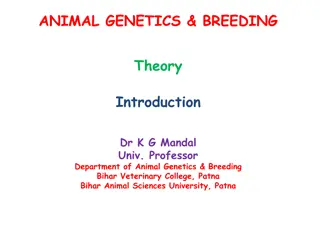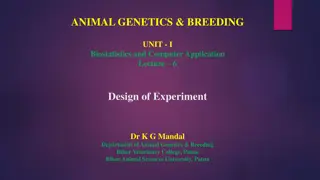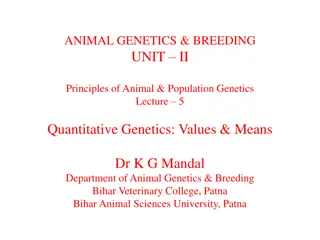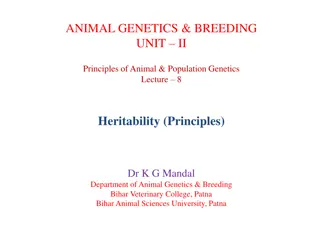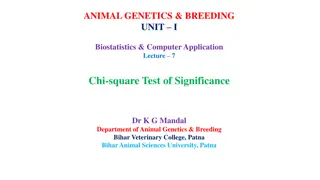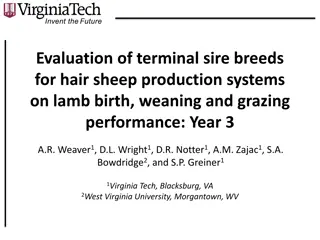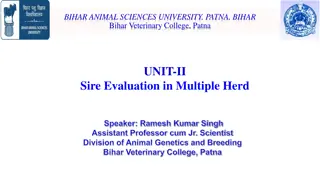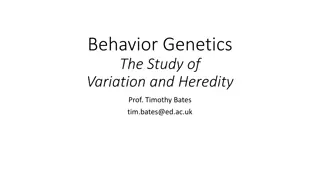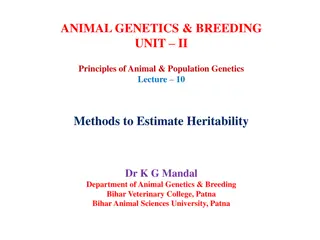Sire Evaluation Methods in Animal Genetics
Sire evaluation plays a crucial role in determining genetic worth and breeding value in animal genetics. Various methods such as Sire Index, Daughter Average Index, and Equiparent Index are used to assess sires for genetic superiority. Biasness in evaluation due to environmental factors and contemporary daughter average index are also discussed.
Download Presentation

Please find below an Image/Link to download the presentation.
The content on the website is provided AS IS for your information and personal use only. It may not be sold, licensed, or shared on other websites without obtaining consent from the author.If you encounter any issues during the download, it is possible that the publisher has removed the file from their server.
You are allowed to download the files provided on this website for personal or commercial use, subject to the condition that they are used lawfully. All files are the property of their respective owners.
The content on the website is provided AS IS for your information and personal use only. It may not be sold, licensed, or shared on other websites without obtaining consent from the author.
E N D
Presentation Transcript
BIHAR ANIMAL SCIENCES UNIVERSITY, PATNA, BIHAR Bihar Veterinary College, Patna UNIT II SIRE EVALUATION IN SINGLE HERD Speaker: Ramesh Kumar Singh Assistant Professor cum Jr. Scientist Division of Animal Genetics and Breeding Bihar Veterinary College, Patna
SIRE EVALUATION A sire s production transmitting ability can be estimated by mathematical means and expressed as a single figure known as Sire Index The result of progeny testing is expressed as the index of the genetic worth of the sire or sire index. It is used in ranking of sires of progeny testing as per their genetic worth so as to select the best sires. The breeding value / genetic worth refers to the average genetic effect of the genes passed on by the individual to its offspring and is estimated to know whether the individual is genetically superior to other individuals or not for the trait concerned.
Biasness in sire evaluation The genetic biasness is created by genetic differences among herds and due to the differences in genetic merit (production level) of the mates of the sire. The major environmental biases are introduced by the different environmental conditions (feeding, management, climatic factors etc.)
SIMPLE DAUGHTER AVERAGE INDEX This index is a simplest method to evaluate a bull by his daughter s production alone in single herd under same environment (Edward, 1932). It provide sound basis of evaluation. This method does not take into account differential production level or probable contributions of the dams or mates of sires or dams of daughters. It leads to bias in evaluation or ranking of sires. SI= Di where, Dij= Average yield of jthdaughters of the ithsire
EQUIPARENT / INTERMEDIATE / MOUNT HOPE INDEX/ YAPP S INDEX This index is based on the principle that the two parents contribute equally to the genetic make up of the progeny. Equiparent index makes adjustment for the different production level of dams. However, it overcorrects the production level of mates allotted to different sires. It overestimates the breeding value of a sire mated to set of dams inferior to the herd average and underestimates if dams superior to the herd average. SI= 2D M where, D = average yield of daughters of the sire; M = average yield of dams mated to the sire
Contemporary daughter average index The herd mate or contemporary comparisons reduce the environmental variation due to herd, year and season. The records of the daughter of a sire are compared with the daughter of all other sires in the same herd calved in the same month or 2 months. The sire index proposed by Sunderasan et al. (1965) is: ? ?+? (D CD) n = no. of daughter; K = constant based on sire error variance I = H + Where,
Corrected contemporary daughter average index The following 2 sire indices as an extension of the contemporary daughter average indices have been proposed. These indices besides adjusting the number of progeny and period to period variation also adjust for the differences in production level of dams allotted to different sires. These indices are: ? I = H + 0.5h2 ?+ ? ? 0.25 2[(D CD) b(M CM)] ? I = H + ?+12 (D CD) b(M CM)] The second index was proposed by Sunderasan et al. (1965) and known as Dairy Search Index.
Least square constants The sire constants are obtained by least squares techniques which adjust the data for all the environmental effects including the non-orthogonality in data. These sire constants are used in getting the sire index as 2? 2 I = 4+ ? ? 2 (Si) Where, Si is the sire constant for ith sire
Maximum likelihood method and REML The maximum likelihood (chance) method estimates the parameters by maximizing the logarithm of the likelihood function. The likelihood function is the likelihood of simultaneous occurrence of observation and is generally the product of the density function of the observations (variables). However, the ML estimates are biased because no account is taken of the degree of freedom in estimating the variance components. The ML method was improved by a method known as restricted maximum likelihood (REML) which takes care of the bias in estimates as well as avoids negative estimates of components of variance (Searle et al. 1992).
Best linear unbiased prediction method (BLUP) The BLUP method of estimation was developed by Henderson (1949, 1973). This method is more powerful than the conventional selection index approach. This provides directly comparable estimates of the average breeding value of groups of animals born in different years. It takes into account the complications of non-random mating, sires from more than one herd, environmental trends over time, herd differences for B. V. of dams and bias due to selection. Thus BLUP takes account of the fixed effects such as herd-year-season and it is applicable when mixed models are used.
